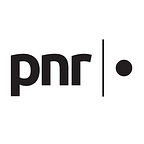Moving at the speed of tomorrow
The current operating model for organizations is outdated. Companies today still employ decision-making models that are incongruent with today’s reality; the world is changing at an ever-increasing pace. For organizations, the model they use to develop their game plan also referred to, as ‘strategy’ needs to constantly adapt to absorb new facts and new customer requirements.
Organizational design and decision making theory has been moving in this direction.
There are many interesting new organizational concepts that have surfaced in recent years and deserve attention. Holacracy, Management 3.0 and Reinventing Organizations are the new kids on the block of organizational theory. The most noteworthy example is Zappos’ recent move to Holocracy.
These new systems are useful in changing the conversation and moving away from traditional top-down management systems. The main difficulty is that successful and long-lasting change remains elusive. The question remains, why is this topic so fundamentally important today?
Decision-making has slowed dramatically
There is growing evidence that organizations are paralyzed by the growing number of technology choices at their disposal.
Source: Fortune, CEB
Another startling fact: 88% of the companies that were on the Fortune 500 list in 1955 are no longer on that list.
Conversely, tech enabled organizations are moving at an ever faster pace as shown below. The road to a billion has become a game of sorts. Becoming the next unicorn is now someone tries to achieve within a 5-year cycle, not a 30-year one.
The real distinction is not between tech startups vs. ‘traditional’ companies but rather a conversation around deeply the process of innovation and decision-making. The consequence of building technology is that it requires constant iteration and execution. This mindset and approach permits these organizations to move faster than their competitors and the market.
A good plan violently executed now is better than a perfect plan next week
Organizations can no longer operate on an annual game plan or even quarterly one at that. The majority of software companies use a process known as agile to create their products. As software is increasingly eating the world, studying this process yields some interesting insights.
- Agile is better than waterfall
- Good enough is better than perfect
- Validated learnings are better than hunches
The organizations that learn faster / internalize those learnings have a much higher chance to succeed than those that don’t.
The rise of Agile Planning
Typically, during peak periods companies will push their teams to work harder & longer hours. This approach is a) not sustainable, b) not always more productive. Working smarter equates agility not effort. We posit that agile planning will accelerate company’s execution velocity while simultaneously improving team culture.
Impact on culture
Agile planning requires that a company’s ambitions be transparent. Any employee can raise their hand and take on a project that’s critical to the organization’s strategy. True empowerment happens when employees are involved at shaping the company’s future.
Strategy is not operations
Day to day operations ensure that the company executes and survives. Strategy is all about levelling up. Agile planning touches the deep issues of strategy and forces leaders to take a step back. What do you want to company look like in a year? The answer to this questions moves beyond operations.
Adaptability is key
The key benefit of agile planning is adaptability. Once the plan is set, leaders understand the speed that their organization is moving at. The opportunity to adjust takes place after 30 days, not 3 months. Leaders need to know what aspect of their strategy is working and which isn’t, this is what agile lets them do faster than before.
We have seen first hand the positive impact that agile planning can have on organizations. The initial change can be a shock to the organization’s system but the short-term pain is nothing compared to the long-term gain: increased competitiveness, faster learning and a more sustainable organization. Nothing else is more important.
